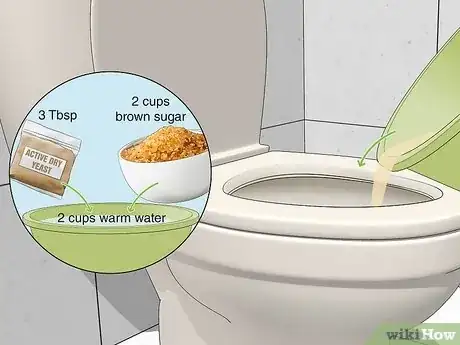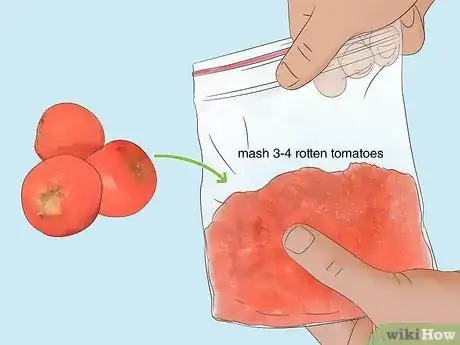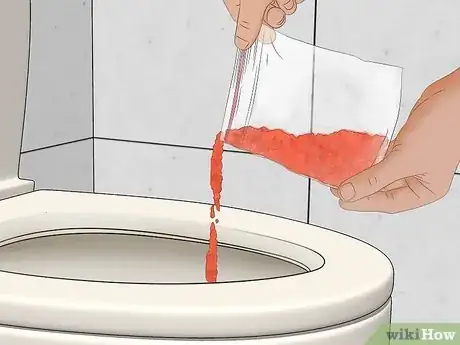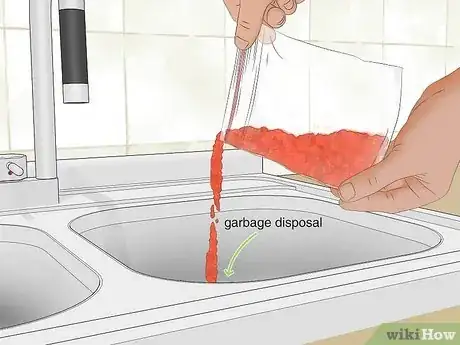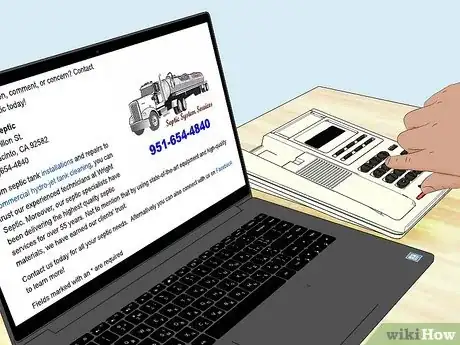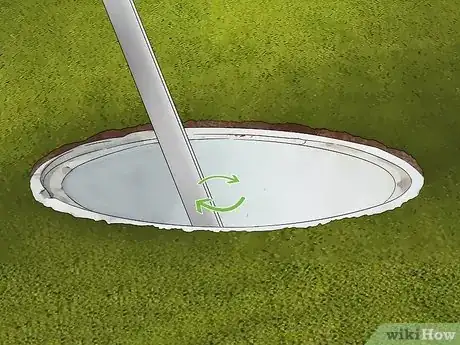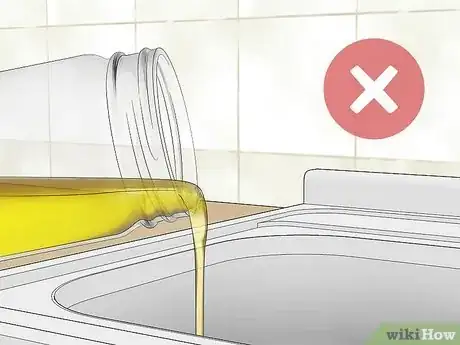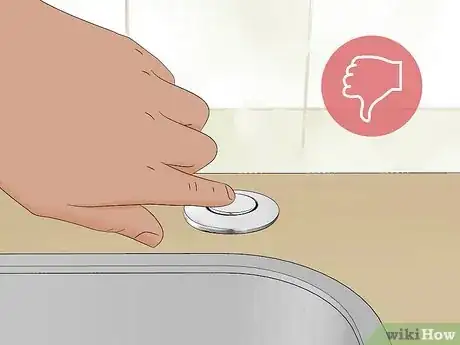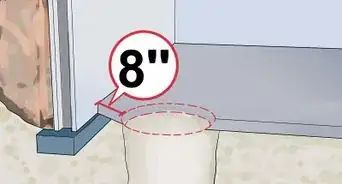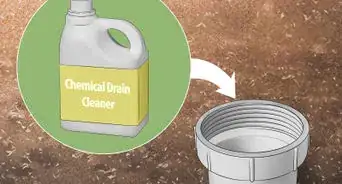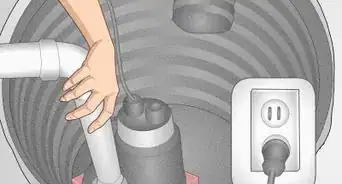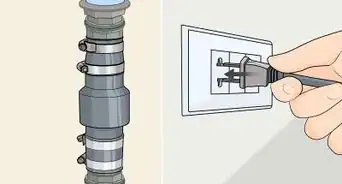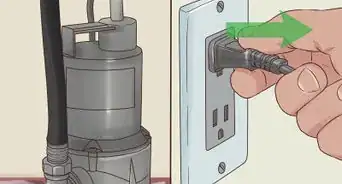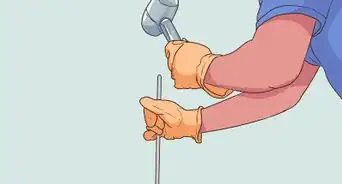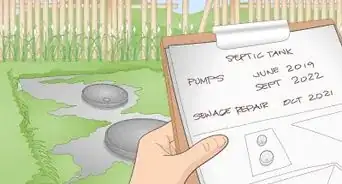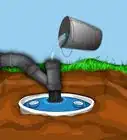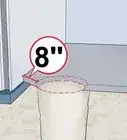This article was co-authored by David Balkan and by wikiHow staff writer, Christopher M. Osborne, PhD. David Balkan is a Professional Plumber, CEO of Balkan Sewer and Water Main Service, and President of Balkan Sewer and Drain Cleaning. As a hands-on owner of these companies for over 40 years, David is knowledgeable about water service lines, sewers, and drain line issues. David is a Committee Chairman of the Master Plumbers Council and has sat on the Executive Committee of the Sub Surface Plumbers Association of New York for over 30 years. His knowledge and solution-oriented approach contributed to Balkan Sewer and Water Main Service being the largest and most trusted service in New York City and the recipient of the 2017 Angie’s List Super Service Award.
There are 7 references cited in this article, which can be found at the bottom of the page.
This article has been viewed 3,794 times.
While a properly-functioning septic tank always has solids in it—a layer of “sludge” at the bottom and a layer of “scum” floating on top—excessive solids can lead to costly (and smelly) problems. While the best way to avoid such problems is through regular inspections and pumping by a professional, we’ve provided several DIY do’s and don'ts to support the sludge-munching bacteria in your septic tank. So if you’re looking for the best treatment options for a septic tank, you’ve come to the right place!
Things You Should Know
- Flush active dry yeast or rotten tomatoes into your septic tank every 3 months to support the beneficial bacteria inside it.
- Avoid sending trash, excessive amounts of fats and oils, and harsh chemicals down your drains.
- Have a professional inspect and pump out your tank at least every 3 years.
Steps
DIY Tank Additives
-
1Flush down some active dry yeast to feed the beneficial bacteria. Naturally-occurring bacteria are essential to breaking down solids in a septic tank. Adding yeast (a bacteria) and sugar (a bacteria food source) every 3 months or so can help maintain your septic tank’s bacteria count. Here’s the “recipe” for this treatment:[1]
- Dissolve 3 Tbsp (18 g) of active dry yeast and 2 c (400 g) of brown sugar in 5 c (1.2 L) of warm water.
- Flush the dissolved mixture down your toilet at a time when you’ll have limited water usage for at least 3 hours afterward. (For instance, do it before going to bed or leaving for the day.)
-
2Feed the tank’s bacteria rotten tomatoes as another option. Yes, this sounds like a strange thing to send down your drain for septic tank maintenance. That said, rotten tomatoes contain enzymes that help break down solids and support beneficial bacteria. Every 3 months or so, try one of the following:[2]
- Place 3-4 rotten tomatoes into a large zip-close bag and use your hands to mash them into a slightly-chunky puree. Flush this down your toilet in 2 batches.
- Cut up (or use a zip-close bag to mash) 3-4 rotten tomatoes and send them half of a tomato at a time down your garbage disposal. Keep the water running the whole time and for a good minute or so afterward.
- Note: Some septic system experts recommend severely limiting (or even completely avoiding) the use of a garbage disposal if you have a septic tank.[3]
Advertisement -
3Consider the arguments for and against commercial treatments. While such products are widely available and commonly used, expert opinions are split on the value of using commercial septic tank treatments such as Rid-X. Supporters say they’re an easy and effective way to add lots of beneficial bacteria to your septic system.[4] Opponents usually say one or more of the following:
- There’s little scientific evidence that adding bacteria to your system helps (as opposed to protecting the naturally-occuring bacteria already in your system).
- Commercial treatments cost more and may not work any better than DIY bacteria treatments like active dry yeast.
- Commercial treatments may work too well, breaking down your tank’s solids into such small pieces that they end up flowing into your draining field and causing blockages and problems there.[5]
Manual/Pro Treatments
-
1Hire a pro to inspect your septic system at least every 3 years. Even if you know the basics of caring for a septic tank yourself, it’s worthwhile to have a professional septic system technician inspect your tank every few years. It’s the best way to catch problems (like excessive solids) before they become severe.[6]
-
2Get your tank pumped out every few years. The average household septic tank should be pumped out and cleaned every 3-5 years. While it may be legal to do the job yourself in some places, this is definitely a task best left to the professionals![7]
- Call a pro right away if you think your tank is full, but don’t put off getting the tank pumped indefinitely just because you don’t notice any signs that it’s full.
-
3Stir the sludge (or have a pro do it) to break up clogs or thick layers. Professional pumpers employ stirring—usually with a long metal pole or similar tool—to break up the “sludge” layer of solids at the bottom of the septic tank so they can pump it out. Similar stirring may temporarily break up a blockage of sludge at the tank’s outlet pipe (which leads into the draining field).[8] However, the tank should be pumped ASAP at this point anyway, since the sludge layer should not be allowed to get within 12 in (30 cm) of the outlet pipe.[9]
- If you need to resort to stirring as an emergency measure, open the septic tank lid, insert a long metal pipe—10 ft (3.0 m) long for an average residential tank—and break up the solid sludge at the bottom as best you can. Be sure to close the tank lid securely afterward. But have a pro do this job whenever possible.
-
4Request backflushing when you get the tank pumped out. Along with stirring, this is another technique used by pro pumpers. During backflushing, some of the liquid sucked out of the septic tank is sprayed back into it in order to break up the solids for more effective removal. Backflushing won’t solve septic tank troubles on its own, but it does make pumping more effective at getting rid of sludge buildup.[10]
What to Avoid
-
1Flushing trash down your toilet: Any septic tank pumper will tell you that you should only flush human waste and (the minimum necessary amount of) bath tissue down the toilet. If you treat your toilet like a trash can, you’ll end up with clogs of solids that can’t be broken down by the bacteria in your septic tank. Avoid items such as (but not limited to) the following:[11]
- Paper towels
- Dental floss
- Cigarette butts
- Coffee grounds
- Cat litter
- Diapers
- Feminine hygiene products
- Condoms
- Pharmaceuticals (expired medications, etc.)
- Non-flushable wipes (face wipes, baby wipes, etc.)
- Flushable wipes (Despite being marketed as “flushable” and “safe for septic systems,” most pros will tell you to steer clear of these.)[12]
-
2Pouring fats and oils down the drain: This is always a bad idea because fats and oils can congeal in the pipes and create clogs. It’s an even worse idea if you have a septic tank, since fats are not readily gobbled up by the bacteria in the tank. Seal fats and oils in containers and put them out with the trash instead.[13]
-
3Using a garbage disposal frequently or incorrectly: Generally speaking, it’s best not to even have a garbage disposal (let alone use one) if you have a septic tank. For starters, people tend to send things down the disposal (like meats, fats, and bones) that aren’t well digested by the tank’s bacteria. Also, even when bacteria-friendly foods (like fruits and veggies) are put in the disposal, they’re pulverized so small that they end up floating in the tank and may clog the outflow pipe.[14]
- If you do own a garbage disposal, use it sparingly and only for fruit and vegetable scraps.
-
4Cleaning with harsh chemicals that end up in the tank: Many common household chemicals are great at killing bacteria, which is exactly what you don’t want to do inside your septic tank. It’s generally okay to use common household products (like toilet cleaners, laundry bleach, etc.) occasionally, but use only the minimal amount needed when needed. Here are some more tips for protecting your tank’s beneficial bacteria:[15]
- Use regular soap instead of antibacterial soap—remember, you’re trying not to kill the bacteria in your septic tank!
- Don’t pour used paint or paint cleaners down the drain, and avoid rinsing your brushes in the sink.
- Use natural cleaners, like baking soda and vinegar to clean sinks, tubs, and toilets, instead of chemical-laden commercial products.
- Skip the chemical drain cleaners and use options like a plunger or boiling water to unclog a toilet or sink.
References
- ↑ https://www.budget101.com/tips-n-tricks/1575-diy-septic-tank-treatment/
- ↑ https://www.budget101.com/tips-n-tricks/1575-diy-septic-tank-treatment/
- ↑ https://www.epa.gov/septic/how-care-your-septic-system
- ↑ https://www.pumper.com/editorial/2011/11/the_rejuvenators
- ↑ https://thecraftsmanblog.com/9-ways-youre-destroying-your-septic-tank/
- ↑ https://www.epa.gov/septic/how-care-your-septic-system
- ↑ https://www.epa.gov/septic/how-care-your-septic-system
- ↑ https://inspectapedia.com/septic/Septic_Tank_Cleaning_Mistakes.php
- ↑ https://www.epa.gov/septic/how-care-your-septic-system
- ↑ https://www.pumper.com/editorial/2017/05/whats_the_best_way_to_remove_stubborn_solids
- ↑ https://www.epa.gov/septic/how-care-your-septic-system
- ↑ https://thecraftsmanblog.com/9-ways-youre-destroying-your-septic-tank/
- ↑ https://www.epa.gov/septic/how-care-your-septic-system
- ↑ https://www.pumper.com/editorial/2014/01/6_tips_your_customers_will_appreciate
- ↑ https://www.epa.gov/septic/how-care-your-septic-system
